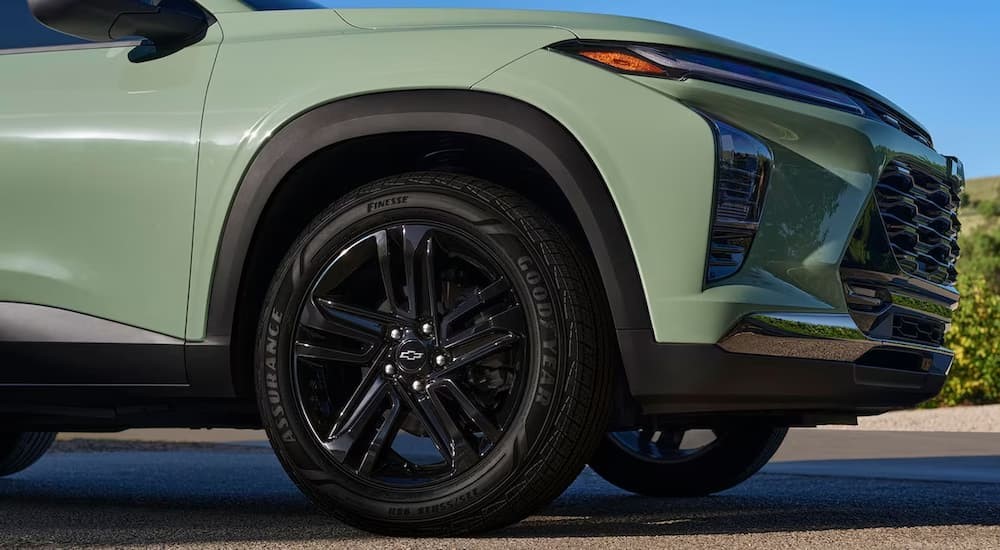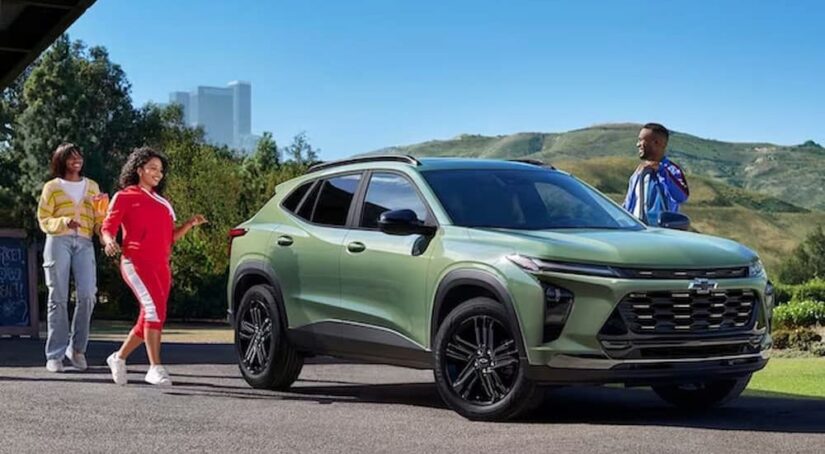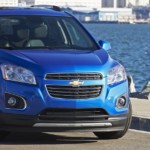The subcompact crossover sector has become increasingly popular among drivers who want the powers of an SUV and the fuel economy of a sedan. Dodge and Chevrolet—two trusted names in the SUV market—each offer drivers a great option: respectively, the Hornet and the Trax.
Many drivers find themselves trapped between the 2024 Chevy Trax vs 2024 Dodge Hornet. However, just because two vehicles are in the same body and size category does not mean they are interchangeable. In fact, each of these vehicles has a distinct personality and will appeal to quite different drivers. Here’s a look at some of the crucial differences…
The MSRP Gap
Let’s begin with the price. The starting MSRP of the 2024 Dodge Hornet sits at $30,735, and the starting MSRP of the Chevy Trax sits at $20,400. With more than a $10k difference between the two, the base trims of these models are going to appeal to drivers with very different budgets.
The price of the Trax can make it a really great option for college students or young adults who are managing their finances for the first time. The Trax is two-thirds the price of the Hornet, and that’s a substantial difference for those on a budget. Drivers who are pinching pennies and watching their finances closely often turn to the Trax.
Meanwhile, the Hornet appeals to those drivers who are in a position to splurge. It might even be a second vehicle someone is adding to their driveway, to accompany a sedan, sports car, or a larger SUV. The price difference is there for a reason, which we’ll get to, but know that the Trax offers a no-frills yet still-solid option to those on a budget, while the Hornet gives drivers looking to treat themselves some more upscale features that consequently come at a cost.

Performance vs Efficiency
The Hornet is really for performance-minded drivers. You’ll know this instantly when you note the horsepower differences between the Hornet and the Trax. The Hornet enjoys a maximum output of 268 hp with its gas engine, while the Trax maxes out at 137 hp. Drivers who want to feel power under the hood and enjoy solid acceleration will love the Hornet.
The Trax, however, has a gas engine that gets much better fuel economy than the Hornet. Its city and highway figures are substantially higher, which is another reason it’s such an appealing option to new drivers, commuters, and drivers on a budget. You’ll save a lot of money the day you buy your Trax as well as throughout your ownership at the gas pump.
It’s also important to note that the Hornet is only available in all-wheel drive, and the Trax is only available in front-wheel drive. These differences again clearly put the Hornet in the performance-forward bucket and the Trax in the more practical one.
The Hornet even has something called the Track Pack, which, as its name implies, has a bunch of goodies that make it ready for the track. This is available on all trims. Inside, you’ll also find a track-inspired flat-bottom steering wheel as well as leather components. These are only a few of the features that account for the Hornet’s higher MSRP.
Chevy’s Better Safety Features
Both the Trax and the Hornet enjoy a generous suite of standard driver assistance features; these include automatic emergency braking, pedestrian detection, lane keep assist, lane departure warning, adaptive cruise control, and blind spot monitoring. They have comparable additional safety features you can add for a cost, too.
What the Trax has that the Hornet lacks, however, is its Teen Driver mode: a series of tools that encourages better driving habits on the part of young drivers. Parents can set speed limits, boundary limits, volume limits, and more. Plus, they can review an after-drive report card, which shows how their teen has been driving. This feature is also a nod to the Trax’s reputation as a great vehicle for younger drivers.
The Trax also has OnStar Connected Services, putting drivers in touch with critical emergency services after a collision. The Hornet has a similar system, but not OnStar, which, for many, is the premium emergency services system.
Spaciousness or a PHEV?
One of the first things people notice when they get in a Trax or Hornet is that the Trax is more spacious. It has greater overall passenger volume and more cargo volume—so if you regularly drive adult passengers around or load up your trunk, you might be best off in the Trax.
Here’s what you need to know about the Hornet: part of the reason it can lose interior volume is its battery pack. Yes, the Hornet can come in a plug-in hybrid variant. Comparatively, the Trax does not yet have a PHEV powertrain option, so if you are determined to switch to a PHEV powertrain, then you’ll want to go with the Hornet.
Rugged Looks or Futuristic?
The Trax and the Hornet have distinctly different exterior styling. The Trax has a lot of angles and body lines, plus its roof racks and slightly squared-off roof make it look quite athletic. The Hornet, on the other hand, is noticeably missing angles and obvious lines and has a very round roof. Overall, the Trax looks rugged and ready for adventure, while the Hornet looks very cosmopolitan.

Infotainment Screen Variety
One interesting difference between the Trax and Hornet is the infotainment screen size. The Trax has a standard 8.0-inch screen, but you can upgrade to an 11.0-inch one. Meanwhile, the Hornet has just one size screen, which is 10.25 inches wide.
This difference is representative of a larger theme between the two vehicles. The Trax gives drivers the option to keep things really simple if they want to save money, but you can always upgrade to premium features in the Trax if you want to splurge. The Hornet, on the other hand, starts with more premium features, so you are launched into a more “luxury” vehicle the moment you begin shopping. That isn’t good or bad; it’s just useful information for shoppers.
Two Very Different Animals
The Trax and Hornet shouldn’t even be considered competition because, as you get to know them, it’s clear that they just appeal to totally different drivers. The Trax competes in the budget-friendly space; it’s super affordable with a low MSRP, and it gets great fuel economy to save drivers even more money over time. It’s basic yet practical, and it has the features that count, such as an unparalleled driver assistance suite.
The Hornet is something you treat yourself to. Its starting MSRP is so much higher than that of the Trax that it’s clear right off the bat that this vehicle appeals to a different demographic than the Trax. It also has more standard and available features—including an emphatic engine and the track package—that make it ideal for performance enthusiasts.
For drivers who still aren’t sure which is for them, one of the most important differences to note is that the Hornet only comes in AWD, and the Trax only comes in FWD. If you need AWD, then you simply need the Hornet. If you don’t, then you can save a lot of money with the Trax.



